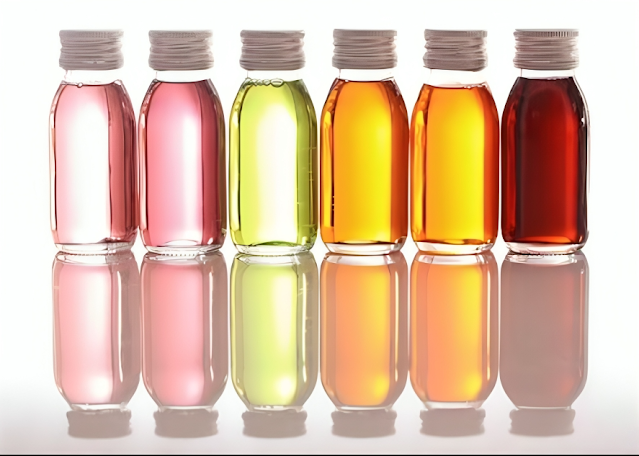Toxic chemicals in everyday products
Toxic Truth: The Chemicals We’re Not Told About in Everyday Products and Their Surprising Health Risks
The modern convenience has a hidden price,the vast majority of common products can contain harmful chemicals that pose serious health risks. From non-stick pans to cosmetics to scented candles, these products expose us to toxic substances associated with cancer, hormonal disturbances, and various other serious health problems.
In this article, we reveal some of the most dangerous chemicals found in common household products and offer healthier alternatives to keep you safe.
1.PFAS—The “Forever Chemicals” in Non-Stick Cookware and Packaging
Per- and polyfluoroalkyl substances (PFAS), known as “forever chemicals,” are used in non-stick cookware, stain-resistant fabrics, waterproof clothing, and fast-food packaging. These chemicals don't readily break down, resulting in long-term exposure for humans and the environment.
Health Risks of PFAS:
- Higher risk for cancer (liver, kidney, and testicular cancer)Immune system.
- Vulnerability and hormone imbalance.
- Cholesterol and Heart Disease.
- Children with developmental delays.
- Steer clear of nonstick cookware; go with stainless steel or cast iron.
- Minimize fast food consumption, as packaging is a common source of PFAS.
- Opt for PFAS-free, stain-resistant fabrics and cleaning sprays.
2.Pesticides —Silent Killers Associated With Childhood Cancers
New research has associated exposure to pesticides with alarming increases in childhood cancers. Pesticides are directly used in agriculture, while residues can be found on fruits and vegetables, as well as in household pest control products.
Health Risks of Pesticides:
- 36% higher risk of brain cancer in children exposed to combinations of pesticides.
- 23% greater risk of developing leukemia.
- Endocrine disruptors causing infertility and malformations.
- Before eating fruits and vegetables, be sure to wash them well.
- Purchasing organic produce whenever you can.
- Instead of chemical sprays, employ natural pest control approaches, such as neem oil and essential oils.
3.Toxic Fragrances—The Invisible Perils of Scented Candles and Air Fresheners
Who doesn’t love a superbly scented home? However, many candles, wax melts, and air fresheners emit toxic volatile organic compounds (VOCs)—including formaldehyde and benzene—that contribute to respiratory problems and even cancer.
Risks of Synthetic Fragrances:
- Higher risk of asthma and irritation to the respiratory system.
- Chemical exposure causing headaches and dizziness.
- Long-term use may be potentially carcinogenic.
Safer Alternatives:
- Burn soy or beeswax candles with natural essential oils.
- Choose natural air purifiers such as aloe vera and peace lilies.
- Use baking soda and essential oils to make DIY air fresheners.
4.Parabens and Phthalates—Toxic cosmetics and personal care products
Your daily skincare routine may be exposing you to harmful preservatives such as parabens and phthalates that are often found in shampoos, lotions, and makeup products. These are known endocrine disruptors, meaning they interfere with hormone function.
Parabens and Phthalates Health Concerns:
- Higher risk of breast cancer and reproductive problems.
- Hormone disruption also drives early puberty in children.
- Possible associations—including obesity and metabolic conditions.
How to Avoid Them:
- Avoid personal care products that contain “parabens” and “phthalates”—look for “phthalate-free” and “paraben-free” labels.
- Use organic skin care brands with natural preservatives.
- Steer clear of strongly scented cosmetics; phthalates are often buried under “fragrance” labels.
5.Flame Retardants—The Hazardous Additives in Everyday Items
Flame retardants are chemicals incorporated into furniture, mattresses, electronics, and kitchenware that hinder fires from spreading. But those chemicals are associated with serious health issues ranging from cancer to neurological disorders.
Adverse Effects of Flame Retardants on Health:
- Thyroid cancer and developmental problems increase.
- Neurotoxicity that causes learning disabilities in children.
- Potential for hormone disruption and infertility.
How to Reduce Exposure:
- Avoid flame-retardant-treated furniture and bedding.
- Dust and vacuum regularly throughout the house to help clean up chemical residues.
- Do not use black plastic kitchenware; it may come from recycled, toxic materials.
6.Too toxic surfactants—in cleaning products and soaps
Surfactants are chemicals found in soaps, shampoos, and cleaning products to break down oils and dirt. Although enhancing the efficiency of cleaning formulations, some surfactants are detrimental to human health and the environment.
Health Risks of Harmful Surfactants
- Allergic skin responses and reactions
- Environmental pollution, impacting marine species.
- Long-term exposure that might disrupt hormones.
Safe Cleaning Alternatives:
- Use natural cleaners such as vinegar, baking soda, and lemon juice.
- Look for eco-responsible brands that have biodegradable surfactants.
- Use fragrance-free and hypoallergenic detergents.
7.Biocides: The Invisible Danger in Antibacterial Products
Biocides include the additives in antibacterial soaps, shampoos, and mouthwashes, which kill bacteria. They can be good, but overuse can kill both the bad and the good bacteria, which turns down your immune system.
Health Risks of Biocides:
- Higher risk of antibiotic resistance.
- Alteration of gut microbiome causing digestive problems.
- Risks to organ health from potential prolonged exposure.
How to Avoid Toxic Biocides:
- Do not use antibacterial soaps unless there is a medical reason to do so.
- Instead, opt for natural alternatives such as tea tree oil for antibacterial effects.
- Look for harmful biocides such as triclosan and benzalkonium chloride on product labels.
Conclusion:The third thing that makes it even more interesting is that the products in modern society are all made to give you convenience, but many of the products are still designed to be harmful to your health. Knowing about harmful chemicals in common products then empowers you to make better choices for a healthier life.
Takeaways—Go Chemical-Free:
✔️ Buy organic and natural personal care products.
✔️ Steer clear of nonstick cookware, using safer options instead.
✔️ Reduce your exposure to pesticides by eating organic produce.
✔️ Use natural, fragrance-free household cleaners.
✔️ Use natural air fresheners instead of chemical-filled ones.Implementing these few modifications will help reduce your exposure to toxic chemicals and safeguard your health.
Thanks for reading,
Have a nice day 😊.









Comments
Post a Comment